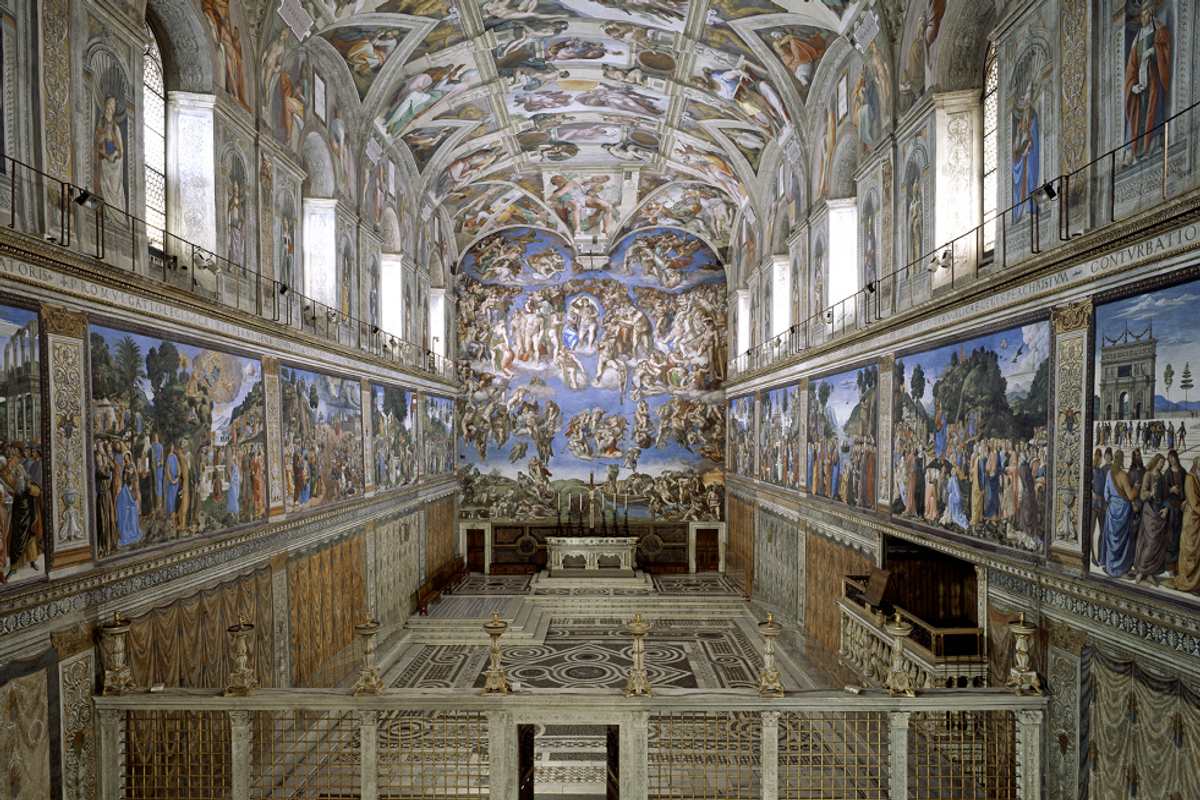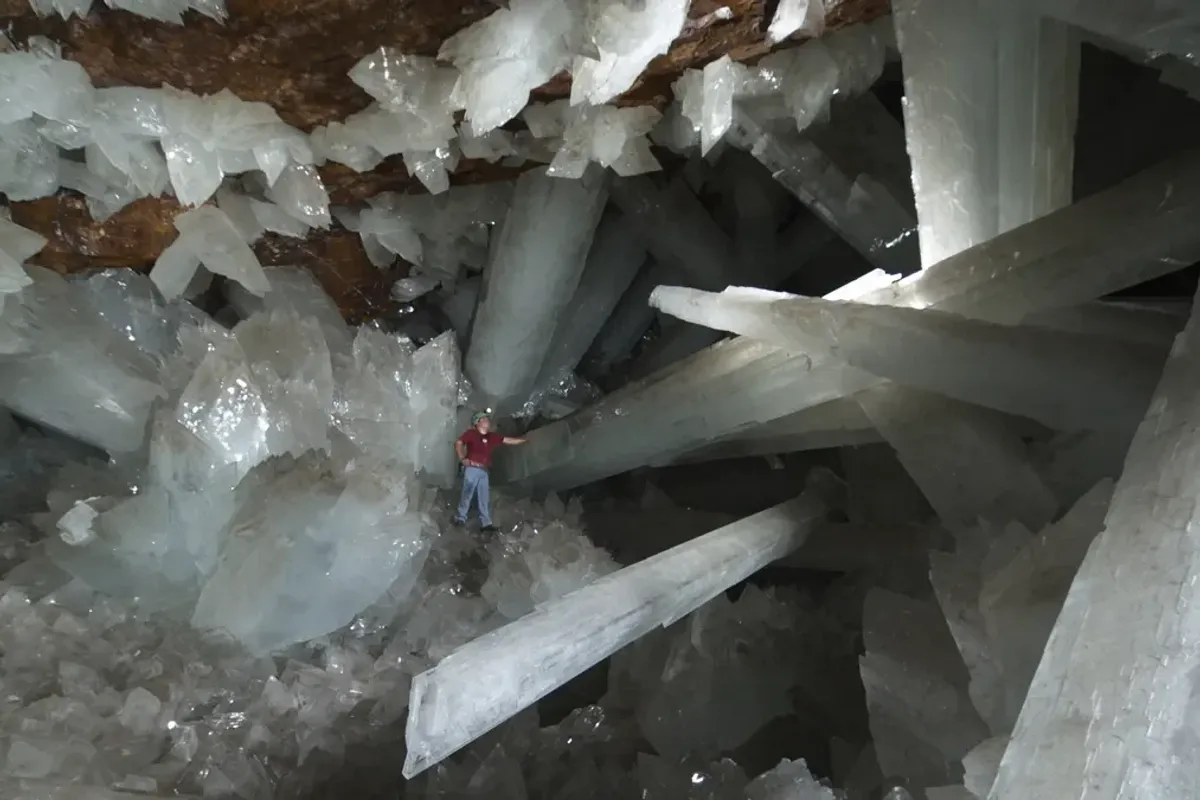Science & Tech
Harriet Brewis
May 10, 2024

The Naica Mine is home to some of the largest-known natural crystals in the world
(IJAVIER TRUEBA / MSF / SCIENCE PHOTO LIBRARY)
A stunning underground cavern, hailed as the “Sistine Chapel of crystals”, has been found to have a deadly secret.
The cave, which is located in Chihuahua, Mexico, is filled with some of the largest natural crystals on the planet – with some as big as trees.
It lies some 300 metres (980 feet) beneath the earth and was discovered by chance in 2000.
Miners were drilling a tunnel into a lead, zinc and silver mine in the town of Naica, 105 kilometres (65 miles) southeast of Chihuahua City when they unearthed a chamber full of towering, milky white crystals.
These incredible formations, the largest of which measures more than 11 metres (37 feet) long and a metre (3.3 feet) wide, are made of selenite gypsum, a sulphate mineral that forms from salts dissolved in groundwater, Live Sciencereports.
This mineral is so soft, you can scratch it with a fingernail and is often used by crystal lovers for meditation (it allegedly possesses “cleansing” and “charging properties”).
"It's the Sistine Chapel of crystals," Juan Manuel García-Ruiz, a geologist with the Spanish National Research Council (CSIC), who has studied the cave, told National Geographic in 2007.

A number of crystal-filled caves have been discovered since mining operations began in Naica back in 1974. These include the so-called Cave of Swords, which is loaded from floor to ceiling with dagger-like crystals.
But the Cave of Crystals, which is shaped like a horseshoe, is the biggest by far: stretching 110 metres (360 feet) across and with a maximum volume of more than twice an Olympic swimming pool (6,000 cubic metres).
The cavern, which is made of limestone, sits above a magma reservoir buried three to five kilometres (two to three miles) beneath Naica, and is also on a faultline.
Its crystals were formed when, 26 million years ago, magma rose from this reservoir, forcing mineral-rich waters upward through cracks in the rock, Live Science notes.
The blistering water opened up caverns in the limestone and formed deposits that crystallised over thousands of years.
Temperatures later stabilised at around 58C (136 degrees Fahrenheit), creating the perfect conditions for giant gypsum crystals to form from a mineral called anhydrite.

Nevertheless, whilst conditions in the cave are ideal for crystals, they are deadly to humans.
Humidity stands at more than 90 per cent – a level at which sweating has no cooling effect on the body. Because of this, people need proper protection to stay in the cave for longer than 10 minutes.
Furthermore, condensation in the cave makes its surfaces incredibly slippery, meaning walking among the crystals is a particularly treacherous endeavour.
Still, though we might not be brave enough to explore the cave ourselves, we are glad that there are those who are.
Looking at pictures of the site, it’s no wonder it is lauded as a work of almost divine art.
Sign up for our free Indy100 weekly newsletter
Have your say in our news democracy. Click the upvote icon at the top of the page to help raise this article through the indy100 rankings
Top 100
The Conversation (0)













